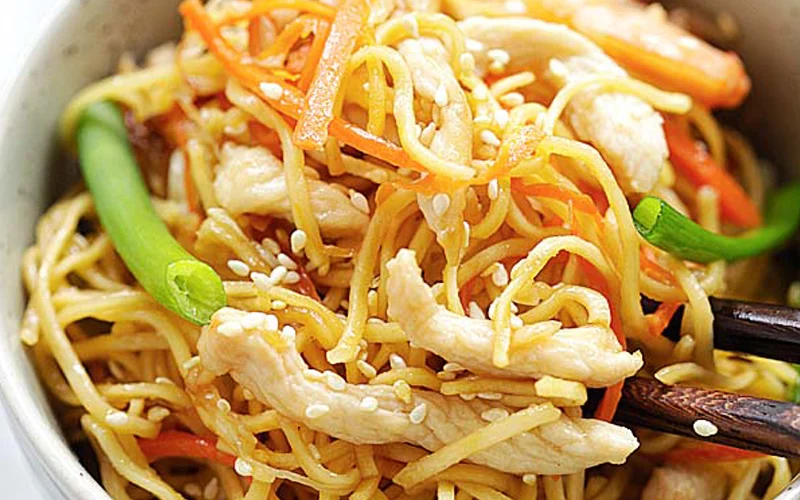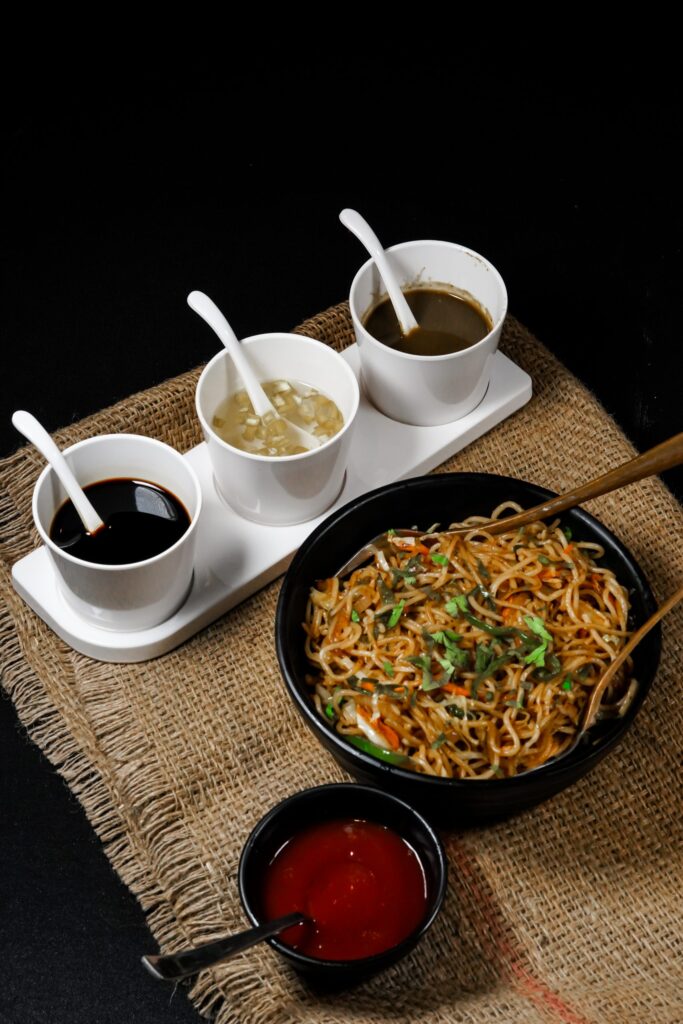Chinese noodle at home can be a beautiful experience, culture and creation. Whether you are a ignorant or interested person, learning how to do noodle well gives you a long-term cooking tradition. In this guide, we will take Chinese noodles, a variety of ways, and on the paths of making the footsteps of you from the beginning.

A Brief History of Chinese Noodles At Home
The Chinese noodle at home no longer have 4,000 years and believe that it comes from the North parts of China. Initially, it was made of roasted wheat, and became a special necessity to make and less expensive food. As usual, Noodle had different interests in the community, and reveal the interest and customs of the community. immediately:
- Wheat noodles dominate in northern China.
- Rice noodles are loved in the South.
Understanding their beautiful history not only leads to cooking knowledge but it also makes you appreciate everything you say.
Types of Chinese Noodles
When deciding the noodle battle, it is important to understand the various types of various available. Let’s examine some of the most popular types:
Egg Noodles
This noodles is made of wheat and eggs, making it delicious and delicious. They do the best for breastfedge and soup.
Rice Noodles
The pages of the rice noodle are unknown, and are perfect in the temperature for food such as phi pad thai.
Hand-pulled Noodles
This method is to expand the dough to be rolled up to long flat stripes. Dry or heat is the best.
Vermicelli Noodles
It is made of corn and bean Starting of this delicious haodly flora, and can be used for salad, sout and Spring Rolls.
Essential Ingredients for Homemade Noodles
To make perfect noodles, you need a few basic ingredients. Here’s what you need to collect:
- Flour: All-purpose flour is typically used for wheat noodles, while rice flour is essential for rice noodles.
- Water: Helps bind the flour together.
- Eggs (optional): For adding richness and flavor.
- Salt: Enhances taste and strengthens the dough.
Tip: The quality of your flour can significantly affect the texture and flavor of the noodles. Opt for high-protein flour for sturdier noodles.
Step-by-Step Process to Make Chinese Noodles
Making your own noodles from scratch can seem daunting, but with the right instructions, you can achieve delicious results. Follow these simple steps:
Step 1: Prepare Your Dough
- Mix Ingredients
- Include 1/2 and salt in a large hole 2 copy. If the eggs are used, include 1-2 eggs as much as you like.
- Include the water from (c. 1/2 Copy) so that the lungs begin together.
- Knead the Dough
- Set the dough behind the flour and make the flour to 10-15 minutes until there is no fatty eyes.
- Rest the Dough
- Bring the dough for at least 30 minutes after this.
Step 2: Roll and Cut the Chinese Noodles
- Roll Out the Dough
- Divide the rest of the flour. Plue each section as you can, about 1/16 Incs with your focus on a goal.
- Cut into Strips
- Cut in the sharp-edged dough for its breadth (1/4 Incs for Middleer Nudels) for the Nudels.
Step 3: Cook the Noodles
- Boil Water
- In a large pot, bring salted water to a rolling boil.
- Cook the Noodles
- Add your freshly cut noodles, cooking for 2-6 minutes depending on thickness. Fresh noodles will cook much faster than dried.
- Drain and Rinse
- Once cooked, drain the noodles and rinse under cold running water to stop the cooking process. This will also remove excess starch.
Pairing Your Chinese Noodles with Delicious Sauces and Toppings
Now that you’ve made your noodles, it’s time to enjoy them! Here are some classic sauce and topping ideas:

Simple Soy Sauce Mixture
- 2 tablespoons soy sauce
- 1 tablespoon sesame oil
- Optional: minced garlic and sliced green onions
Spicy Peanut Sauce
- 3 tablespoons peanut butter
- 2 tablespoons soy sauce
- 1 tablespoon rice vinegar
- Add chili flakes to taste
Let there be no doubt that you will use vegetables, proteins and massal, depending on your priorities!
Common Mistakes to Avoid
- Overworking the dough: his can be thick noodles. Knead onlot only until smooth.
- Too much flour:This can dry out the noodles. Always measure the dough carefully.
- Not enough resting time: Lasa’s breath can be comforting and soften the dough.
Conclusion
Making homemade Chinese noodles is a satisfying and rewarding culinary career. With a few simple ingredients and a little patience, you can create a meal reminiscent of your favorite takeaway or your own special. So roll up your sleeves, gather the ingredients and start experimenting! You will find that the flavor of homemade noodles complements your favorite sauces and dishes beautifully.
Remember, a culinary journey is also about enjoying the food itself. Share the homemade noodle experience with your friends and family, and feel free to adapt the recipe to suit your tastes!
For more cooking tips and recipes, check out our other blog posts on homemade dumplings here and here on stir fringe art. Happy cooking!









